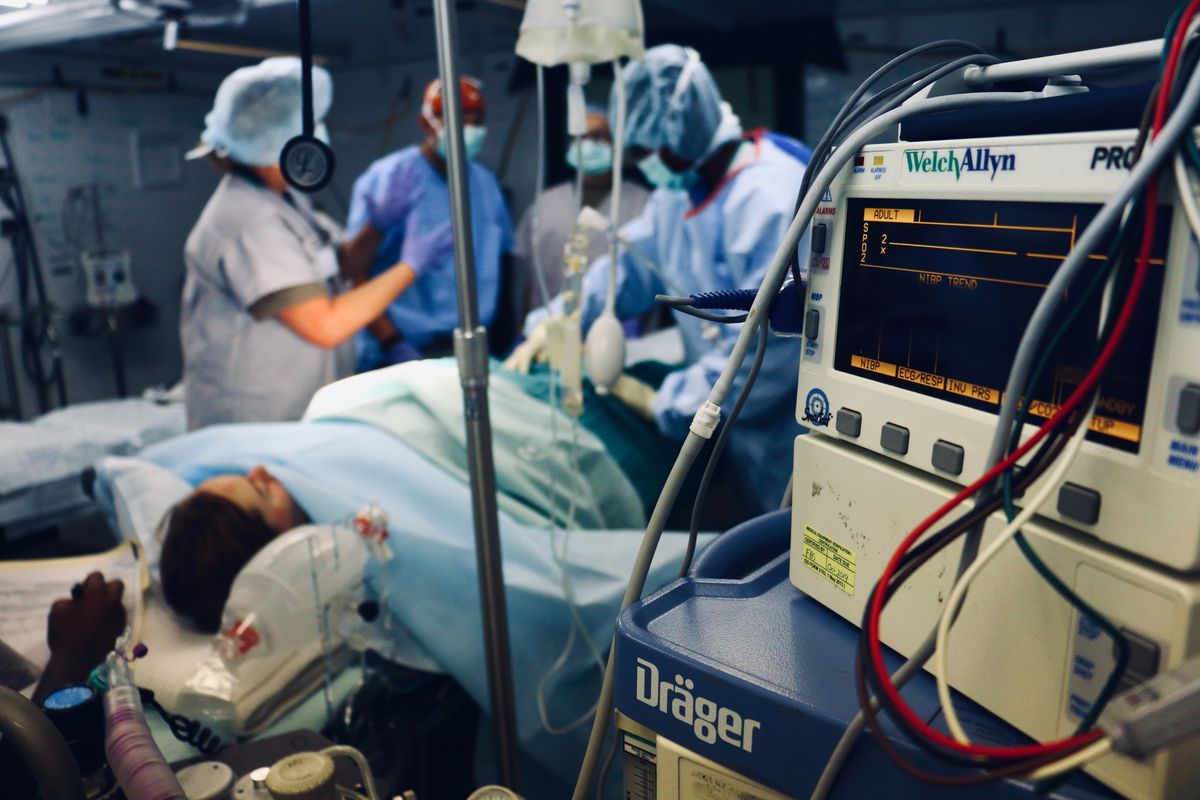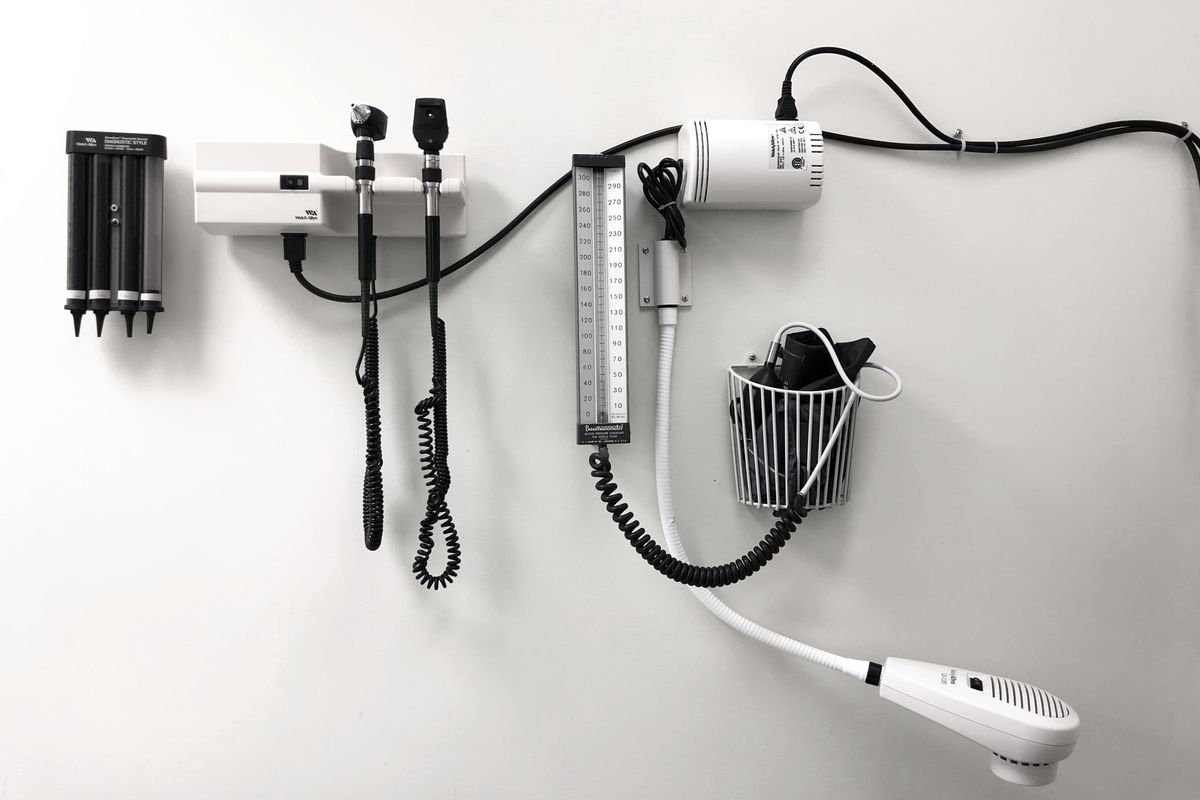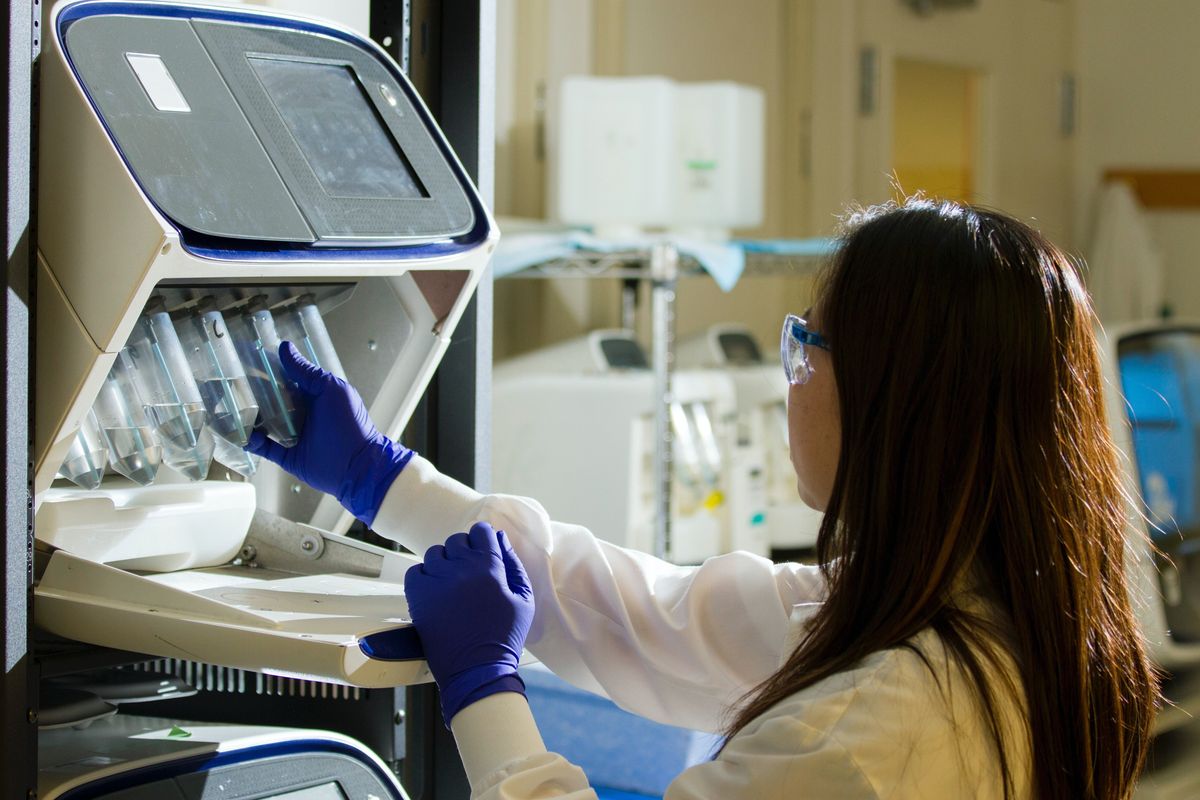
In the fast-paced world of healthcare, medical device representatives are the unsung heroes who bridge the gap between cutting-edge technology and patient care. Yet these dedicated professionals face many complex challenges navigating this intricate realm. This exploration delves into the top five challenges confronting medical device reps, shedding light on the dynamic and ever-evolving landscape they traverse to improve patient outcomes and advance medical innovation.
1. Building Customer Relationships with Limited Access to Physicians and Hospitals: The healthcare industry, driven by an evolving regulatory landscape and concerns about patient privacy, has witnessed a noticeable decrease in direct access to physicians and hospitals for medical device representatives. Establishing and nurturing meaningful relationships with healthcare professionals has become an intricate dance, requiring a nuanced approach, as restrictions on in-person interactions and gatekeepers guarding access to decision-makers have intensified.
2. Sales Rep Training—Understanding and Explaining Complex Products: Medical devices, characterized by their sophistication and intricate functionalities, present a formidable challenge for sales representatives. Mastery of these complex products, from understanding their mechanisms to articulating their benefits, is a formidable task. Effective training programs are vital to equip medical device reps with the knowledge and skills to engage in meaningful discussions with healthcare professionals.
3. Physician Training—Teaching Physicians How to Use Complicated Medical Devices: Beyond sales, medical device representatives are essential in educating physicians on the proper use of intricate medical devices. The challenge lies in simplifying the complex, ensuring that healthcare providers can confidently and safely integrate these technologies into patient care while minimizing the risk of errors or complications.
4. Economic Pressures in Healthcare: The cost-conscious healthcare landscape is daunting for medical device reps. Increasing pressure to reduce healthcare expenditures significantly emphasizes cost-effectiveness and return on investment for medical devices. Demonstrating their products' long-term value and efficiency in a cost-sensitive environment is an ongoing challenge.
5. Competitive Market: The medical device industry is fiercely competitive, with numerous players vying for the attention of healthcare professionals. Keeping abreast of competitors, differentiating products, and constantly innovating is imperative. Moreover, the rapidly evolving nature of medical technology adds a layer of complexity as medical device reps must stay ahead of the curve in a relentless pursuit of excellence.
Medical device representatives face a multitude of challenges in their efforts to improve medical technology and enhance patient care. Their unwavering commitment to these goals is crucial in advancing healthcare. Let's take a closer look at these obstacles and the innovative strategies and insights that are helping these representatives overcome them.
1. Building Customer Relationships With Limited Access To Physicians And Hospitals
 Photo by National Cancer Institute on Unsplash
Photo by National Cancer Institute on UnsplashBuilding customer relationships in healthcare with limited access to physicians and hospitals can be challenging, but it's crucial for success. Here are some tips to help you establish and maintain strong customer relationships in this situation:
- Leverage Digital Communication: Use digital channels like email, teleconferencing, and messaging apps to stay in touch with your customers. Make sure your online presence is professional, informative, and easily accessible.
- Educational Content: Provide valuable, relevant, and up-to-date customer information. This could include research findings, product updates, or industry news. Demonstrating your expertise builds trust.
- Personalized Communication: Tailor your interactions to each customer's needs and preferences. Show that you understand their unique challenges and goals.
- Virtual Seminars and Webinars: Organize online educational events to share knowledge, discuss industry trends, and answer questions. This helps you engage with customers and position your company as a thought leader.
- Social Media Engagement: Actively participate in social media platforms where your customers are present. Share content, respond to comments, and engage in meaningful conversations.
- Mobile Apps: If appropriate, consider developing a mobile app that offers valuable tools or resources related to your products or services. This provides a convenient way for customers to engage with your brand.
- Remote Training and Support: Offer remote training sessions for healthcare professionals to ensure they understand how to use your products effectively. Provide ongoing support through virtual channels to address any issues or questions.
- Feedback and Surveys: Regularly seek customer feedback to understand their needs and preferences better. Use surveys or feedback forms to gather insights for improvement.
- Content Marketing: Develop and share informative content, such as blog posts, videos, and infographics. This not only demonstrates your expertise but also keeps your customers engaged.
- Community Building: Create online communities or forums where healthcare professionals can connect, share experiences, and discuss best practices. Your brand will facilitate these interactions.
- Partnerships: Collaborate with other organizations or companies in your industry to expand your reach. Partnering with institutions or associations can provide access to their networks.
- Compliance and Data Security: Ensure your digital communication methods comply with relevant healthcare regulations and prioritize data security and patient privacy.
- Follow-Up: Follow up with a thank-you note or discussion summary after every interaction. This reinforces your commitment to customer satisfaction.
Building strong customer relationships takes time and effort. By providing value, being consistent, and maintaining a customer-centric approach, even with limited access to physicians and hospitals, you can foster trust and loyalty among your customer base.
2. Sales Rep Training—Understanding And Explaining Complex Products

Photo from Bigstock
Training sales representatives to understand and explain complex medical devices is a critical process that requires a specialized approach. Here's a structured training program for sales reps in the medical device industry:
- Product Knowledge Training:
- Start with an in-depth understanding of the medical devices your company offers. This should include how the technology works, its components, and its applications in medical settings.
- Ensure sales reps understand the technology's benefits, features, and competitive advantages.
- Provide hands-on experience with the devices whenever possible, allowing reps to operate them and witness their use in clinical scenarios.
- Medical Knowledge:
- Sales reps must have a solid foundation in medical terminology and concepts relevant to the devices they are selling.
- Offer resources or access to experts who can explain medical conditions and procedures where the devices are utilized.
- Compliance and Regulations:
- Thoroughly educate your sales team on the latest laws, regulations, and industry standards governing the sale of medical devices.
- Highlight the consequences of non-compliance and stress the importance of adhering to ethical and legal standards.
- Customer Persona Training:
- Help sales reps understand the professionals they will interact with, such as surgeons, nurses, or hospital administrators.
- Teach them the specific pain points and challenges these professionals face daily.
- Competitive Analysis:
- Train sales reps to identify the competition and how your devices compare to alternatives on the market.
- Provide them with insights into competitive advantages and unique selling points.
- Communication and Presentation Skills:
- Sales reps should be able to explain complex concepts in simple terms, adapting their language to the healthcare professionals' knowledge level.
- Conduct regular role-play exercises to enhance their communication and presentation skills.
- Handling Objections:
- Prepare sales reps for common objections and challenges that healthcare professionals might raise.
- Provide them with effective rebuttals and solutions to address these objections.
- Sales Techniques Specific to Healthcare:
- While general sales tactics are valuable, emphasize the importance of industry-specific sales strategies for healthcare.
- This includes understanding the long sales cycle, the need for clinical evidence, and building trust with healthcare professionals.
- Regulatory and Clinical Evidence:
- Familiarize sales reps with clinical studies and data supporting the device's effectiveness and safety.
- Train them to interpret and present this data to healthcare professionals accurately.
- Ongoing Training and Updates:
- Healthcare is a dynamic field with evolving technology and regulations. Provide ongoing training sessions to update your sales reps on the latest developments.
- Ethical Considerations:
- Instill a strong sense of ethics in your sales team, emphasizing the importance of prioritizing patient care and safety.
- Mentorship and Shadowing:
- Encourage new sales reps to shadow experienced ones or work closely with mentors to gain practical insights and knowledge.
- Certification:
- Consider offering certification programs or assessments to ensure sales reps have mastered the required knowledge and skills.
- Feedback and Improvement:
- Continuously collect feedback from sales reps and customers to refine and improve the training program.
By focusing on these aspects, your sales representatives will be well-equipped to understand, explain, and sell complex medical devices to highly educated healthcare professionals while maintaining a high standard of knowledge and ethical conduct.
3. Physician Training—Teaching Physicians How To Use Complicated Medical Devices

Photo from Bigstock
Demonstrating how to use medical devices to physicians can be complex due to several challenges. Physicians often work in fast-paced, high-stress environments and must be confident using these devices effectively. Here are some common challenges in demonstrating medical device usage to physicians:
- Time Constraints: Physicians have busy schedules, and finding time for training can be difficult. Shortages of healthcare staff and the need for quick patient turnover can limit the time available for device training.
- Varying Levels of Experience: Physicians come from diverse backgrounds and may have varying levels of experience with different medical devices. Some may be novices, while others are experts.
- Technological Complexity: Medical devices are becoming increasingly sophisticated, and their operation can be complicated. Physicians may need help to learn how to use devices with intricate interfaces or multiple functions.
- Fear of Errors: Physicians are acutely aware of the potential consequences of errors when using medical devices. This fear can create a barrier to learning and adopting new devices, as they want to avoid harming patients.
- Resistance to Change: Healthcare professionals often prefer the status quo and may resist adopting new technologies or devices, primarily if they have used older equipment for years.
- Limited Access to Devices: Access to medical devices for practice and hands-on training may be limited, making it harder for physicians to gain the necessary proficiency.
- Lack of Feedback: Physicians may not receive immediate feedback on their device usage, which can hinder the learning process and leads to a lack of confidence in their abilities.
- Training Resources: Hospitals and healthcare institutions may have few resources or dedicated staff for training on new medical devices, leaving physicians to figure things out independently.
- Regulatory Compliance: Specific regulations and guidelines must use many medical devices. Ensuring that physicians know and adhere to these standards can be challenging.
- Continual Updates: Medical devices often receive software updates and improvements. Ensuring physicians stay current on the latest device features and safety measures is an ongoing challenge.
Developing effective training programs tailored to the physicians' needs and preferences is essential to address these challenges. This might include in-person training, online resources, simulations (AR/VR), and regular proficiency assessments. Additionally, involving physicians in the selection process of medical devices and seeking their input on usability and training needs contributes to a smoother adoption process. Collaboration between medical device manufacturers, healthcare institutions, and physicians helps develop comprehensive strategies for training and ongoing support.
4. Economic Pressures In Healthcare
 Photo by Abby Anaday on Unsplash
Photo by Abby Anaday on UnsplashEconomic pressures in healthcare are a significant concern and have a far-reaching impact on various aspects of the industry. These pressures arise from a combination of factors, including increasing demand for healthcare services, rising costs, evolving regulations, and a need for healthcare providers to maintain financial sustainability. Here's a closer look at some of the key economic pressures in healthcare:
- Rising Healthcare Costs: Healthcare costs have steadily increased for decades, outpacing inflation. This includes the costs of medical devices, pharmaceuticals, hospital services, and physician fees. These rising costs affect patients, healthcare providers, and the broader economy.
- Technological Advancements: While medical technology advancements have improved patient care and outcomes, they often come with high upfront costs. Hospitals and healthcare facilities must invest in new equipment and devices to remain competitive and provide the best care, but these investments could strain their budgets.
- Value-Based Care: Healthcare payment models are shifting from fee-for-service to value-based care. This means that providers are now reimbursed based on the quality and outcomes of care they provide rather than the quantity of services. While this shift reduces costs and improves patient care, it could create financial uncertainties for providers during the transition.
- Reimbursement Challenges: Providers, especially hospitals, face challenges related to reimbursements from government programs (Medicare and Medicaid) and private insurers. Reimbursement rates may need to catch up with the actual costs of delivering care, leading to financial strain.
- Administrative Costs: The administrative burden in healthcare is substantial, with a significant portion of healthcare spending going toward administrative tasks, such as billing, compliance, and regulatory reporting.
- Economic Disparities: Economic disparities in healthcare access and outcomes are pressing. Low-income individuals and communities often face barriers to receiving appropriate care, leading to more costly health issues in the long run.
- Patient Demands and Expectations: Patients have higher expectations for healthcare quality, which could drive up costs as providers invest in patient experience improvements and technologies.
In this context, medical device sales representatives are crucial in addressing some of these economic pressures. They must demonstrate their products' cost-effectiveness and long-term benefits to hospital administrators and financial decision-makers. To do this effectively, they may need to:
- Provide data and evidence that their product can improve patient outcomes, reduce the length of hospital stays, or lead to better resource allocation.
- Offer cost-benefit analyses to show that the initial investment in their device will yield savings over time.
- Highlight the device's compliance with value-based care models and its potential to enhance the quality of care.
- Collaborate with healthcare providers to understand their unique financial challenges and tailor their sales pitch accordingly.
- Utilize IDN/GPO national agreements.
- Create and manage volume and incentive-based contracts.
Overall, navigating economic pressures in healthcare requires a multifaceted approach that involves collaboration between healthcare providers, policymakers, and industry stakeholders to find sustainable solutions that balance quality of care and cost-effectiveness.
5. Competitive Market
 Photo by National Cancer Institute on Unsplash
Photo by National Cancer Institute on UnsplashThe medical device industry is highly competitive. Sales representatives often compete against numerous companies, all vying for the same clients. Differentiating their products and demonstrating their value can be challenging.
Sales representatives in this field must adopt effective strategies to differentiate their products and demonstrate their value to potential clients. Here are some key strategies to succeed in a competitive market:
- Understand Your Product Thoroughly: Sales reps must have an in-depth understanding of the medical devices they sell. This includes their technical specifications and clinical benefits, potential risks, and how they compare to similar products.
- Know Your Target Audience: Identify your ideal customers, such as hospitals, clinics, or healthcare providers. Tailor your approach to their specific needs and challenges.
- Highlight Unique Selling Points: Determine what sets your product apart. This could be superior technology, cost-effectiveness, ease of use, or patient outcomes. Emphasize these unique selling points in your sales pitch.
- Offer Customized Solutions: Instead of offering a one-size-fits-all solution, work with clients to tailor your product to their needs. Show how your product solves their problems more effectively than others.
- Build Relationships: Nurturing strong client relationships will set you apart. Regularly follow up, provide excellent customer service, and be a reliable source of information and support.
- Provide Evidence-Based Information: Data and evidence are critical in the healthcare industry. Use clinical studies, case reports, and patient outcomes to demonstrate the effectiveness and safety of your product.
- Educate Your Customers: Hold educational sessions or workshops to help clients understand how to use your product effectively. This builds trust and confidence in your offering.
- Stay Updated on Industry Trends: Keep yourself informed about the latest trends, regulations, and advancements in the medical device industry. Being a knowledgeable resource for your clients adds value.
- Competitive Pricing: While quality is essential, offering competitive pricing or flexible payment options can also be a strong selling point. Highlight how your product provides value for money.
- Network: Attend industry conferences, trade shows, and events to connect with potential clients and other professionals in the field. Networking opens doors and provides valuable insights
- Use Technology: Leverage technology for CRM (customer relationship management) to keep track of client interactions, preferences, and opportunities. This helps you offer a more personalized experience.
- Feedback and Improvement: Continuously gather feedback from clients and internal teams to identify areas for improvement. This leads to product enhancements and more effective sales strategies.
- Be Patient: Sales cycles in the medical device industry can be long. Be patient; winning over a client or securing a deal might take time.
In a competitive market, success often hinges on your ability to communicate the value of your product and the trust you build with your clients. Combining product knowledge with relationship-building skills and a customer-centric approach can help you stand out in the medical device industry.
The medical device sales representatives’ journey is full of obstacles, but they are not roadblocks. Stay committed to your mission and know that every obstacle you overcome brings you one step closer to positively impacting patient care. Embrace the opportunity to learn and adapt to the ever-evolving technology and regulations because this knowledge will set you apart from the competition.
Building trust with healthcare professionals may take time, but persistence will be rewarded. Show passion and belief in your products to stand out in a crowded market. Continue to push forward. Unwavering dedication and hard work will undoubtedly lead to financial success, lasting physician partnerships, and gratification from contributing to a better quality of life for countless patients.
If you want to gain a more comprehensive understanding of the top five challenges that medical device sales representatives face, or if you have additional obstacles or concerns that you would like to discuss, please feel free to contact me. I would be happy to have a detailed conversation with you about this topic.
- Member Spotlight: Dale Herzog, Medical Device CAD Engineer ›
- The 4 Pillars Of A Culture Of Safety In Healthcare ›
- Is It Burnout Or Compassion Fatigue In Healthcare? And Why Is It Important? ›
- 11 Signs Your Operations Are Undermining Your Marketing Efforts - Work It Daily ›
- From SDR To Sales Manager: 7-Step Methodology For Success - Work It Daily ›

 Bigstock
Bigstock Bigstock
Bigstock Bigstock
Bigstock


